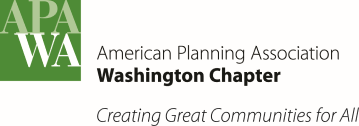- About Us
- Events & Training
- Professional Development
- Sponsorship
- Get Involved
- Resources
Safe Streets for Better, More Socially Just CommunitiesAndreas Wolfe, Michael Hintze, AICP ([email protected])The death of George Floyd and the reckoning that has come with it has prompted cities to reexamine the role of policing in their cities, including the role of police in ensuring people’s behaviors while using transportation systems do not compromise traffic safety. The modern traffic safety movement started with three E’s: Education, Enforcement and Engineering. The Vision Zero Network and most major US cities that belong to it, call for enforcement activities that are data driven and focus on the most dangerous activities (e.g., impairment, speeding, distraction). The issue, as it concerns planners, is that a focus on traffic enforcement as a means to achieving a safe transportation system detracts from other potentially more effective strategies that can help communities meet multiple goals, including social equity, economic development, and creating livable and inclusive communities where everyone can thrive. What can planners do? Planners do not have the authority to directly implement new policies, but they can be champions of change in conjunction with city councils, police departments and public works departments. Here are the top three things planners can do:
Self-enforcing streets are streets where the elements of the streets encourage good behavior, rather than an overreliance on signs and regulation. Examples are landscaping, changes in roadway texture, and importantly, urban form and the presence of human activity that send the message to drivers that the street is a place rather than just a conduit, and that care is needed. The foundation of the Safe Systems Approach is to cater the way we design our streets to human behavior, rather than force human behavior to adopt to the design of our street. Examples include using signal timing, pedestrian refuges, crosswalks, and other measures to create safe and convenient crossings and routes between transit stops and surrounding destinations. An analysis of all 50 state patrols and the 100 largest city police departments found a per capita stop rate of .10 for black drivers and .07 for white drivers. Programs exist that reduce the financial impact of traffic citations on low-income communities and communities of color. These include: 1) Ticket Diversion Programs, 2) income-adjusted fees, and 3) eliminating the use of court summons for simple moving violations. Alone, these do not account for years of discrimination and racial profiling, which can only be achieved by eliminating disparities in the number of stops that people of color endure. Conclusion: Planners’ code of ethics, section 1F, calls on us to alter policies that oppose social justice and racial integration, of which creating thriving communities without police bias is a major component. Section 1G calls on us to promote excellence in design. Though enforcement policies and practices and street design fall outside the daily duties of the typical planner we have an opportunity to be champions of change, and in fact, are obligated to do so. |

